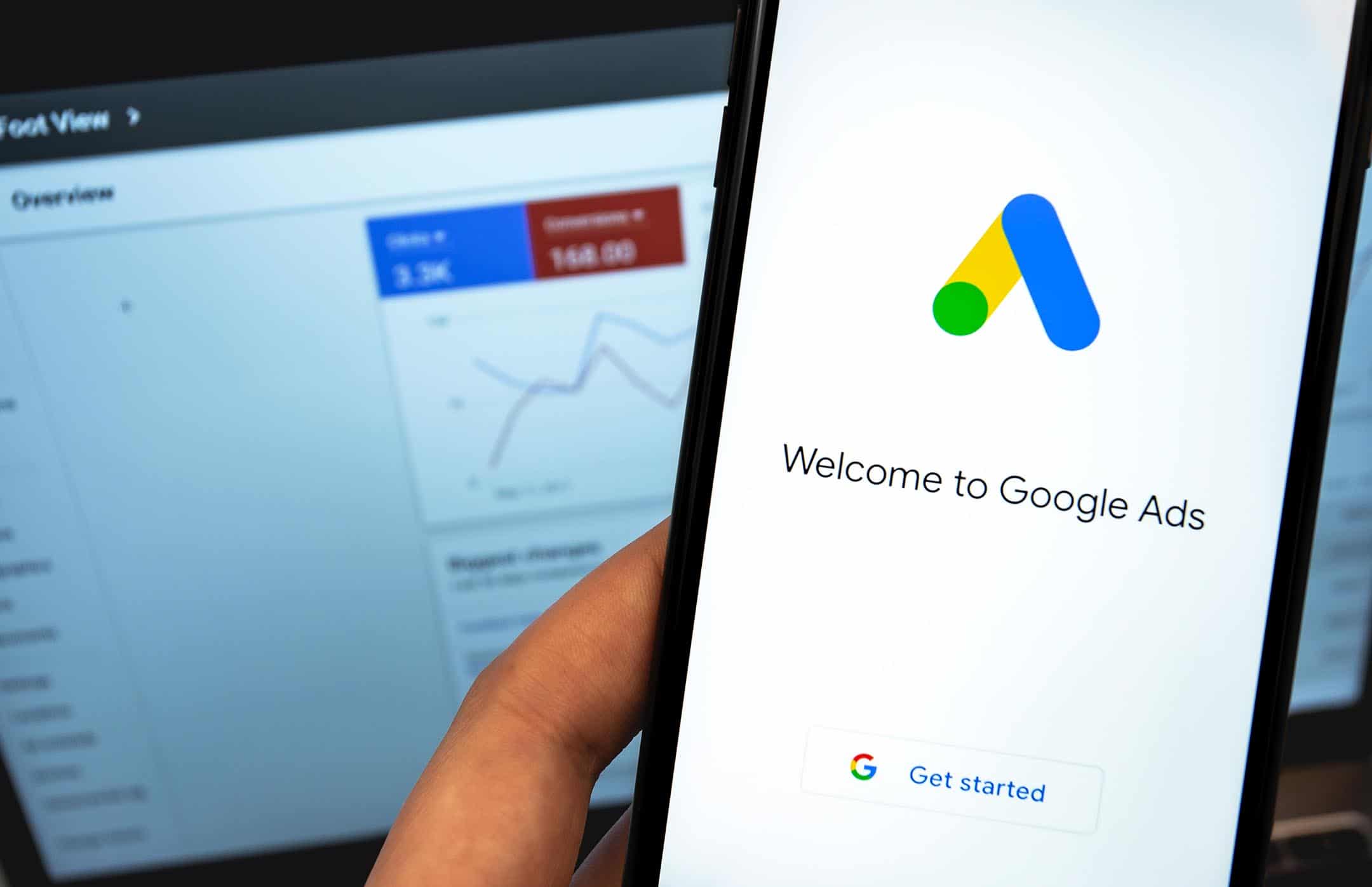Online visibility refers to how easily a business can be found on the internet. In the digital age, having strong online visibility is crucial as it directly impacts brand awareness, customer acquisition, and overall business growth. With the vast majority of consumers turning to search engines and social media to discover products and services, businesses must ensure they are prominently visible online to capture potential customers’ attention.
Achieving strong online visibility, however, is not without its challenges. The ever-changing algorithms of search engines, the increasing competition for digital real estate, and the need for continuous content creation and engagement make it difficult for businesses to maintain a robust online presence. Additionally, the rise of mobile browsing and voice search introduces new complexities in optimising for different platforms and user behaviours.

Understanding Online Visibility
What is Online Visibility?
Online visibility refers to how easily a business or brand can be found on the internet. It encompasses the presence and prominence of a business across various digital platforms, including search engines, social media, online directories, and websites. High online visibility means that when potential customers search for related products, services, or information, the business appears prominently in the search results, making it more likely to attract attention and engagement.
Why is Online Visibility Crucial for Businesses?
In today’s digital-first world, online visibility is essential for businesses of all sizes and industries. As consumers increasingly rely on the internet to discover, research, and purchase products and services, having a strong online presence is vital. Without adequate visibility, even the best products and services can go unnoticed, leading to missed opportunities and lost revenue. High online visibility helps businesses stay competitive, reach new audiences, and establish credibility in the digital marketplace.
The Impact of Online Visibility on Brand Awareness, Customer Acquisition, and Retention
Brand Awareness
Strong online visibility significantly boosts brand awareness. When a business consistently appears in search results, social media feeds, and online advertisements, it becomes more recognisable to potential customers. This repeated exposure builds familiarity and trust, making it more likely that consumers will remember and choose the brand when they are ready to make a purchase.
Customer Acquisition
Increased online visibility directly contributes to customer acquisition. By appearing in relevant search results and social media channels, businesses can attract a steady stream of potential customers actively seeking their products or services. Effective SEO, content marketing, and social media engagement strategies drive traffic to the business’s website, leading to higher conversion rates and more new customers.
Customer Retention
Online visibility also plays a crucial role in customer retention. Engaging content, regular updates, and active social media presence keep existing customers informed and connected with the brand. By consistently delivering value and maintaining a visible online presence, businesses can foster loyalty and encourage repeat purchases.
Online visibility is a cornerstone of digital marketing success. It enhances brand awareness, facilitates customer acquisition, and strengthens customer retention, ultimately driving business growth in a competitive digital landscape.

Key Factors Affecting Online Visibility
Search Engine Optimisation
SEO is a critical component of online visibility, as it helps improve a website’s ranking on search engine results pages (SERPs). Higher rankings lead to increased visibility, driving more organic traffic to the site. Effective SEO ensures that your content is easily discoverable by search engines and potential customers.
On-Page SEO Techniques
On-page SEO involves optimising individual web pages to rank higher and earn more relevant traffic. Key techniques include:
Keyword Optimisation
Identifying and using relevant keywords that potential customers are searching for. This includes placing keywords in strategic locations such as the title, headers, and throughout the content.
Meta Tags
Crafting compelling and descriptive meta titles and descriptions that include target keywords. These tags help search engines understand the content of your page and influence click-through rates.
Content Quality
Ensuring content is informative, engaging, and valuable to the reader. High-quality content that addresses user intent can improve dwell time and reduce bounce rates, both of which positively impact SEO.
Off-Page SEO Techniques
Off-page SEO focuses on building your website’s authority and reputation through external methods. Key techniques include:
Backlinks
Acquiring links from reputable websites that point back to your site. High-quality backlinks signal to search engines that your content is valuable and trustworthy.
Social Signals
Engaging on social media platforms to generate likes, shares, and comments. Active social media presence can drive traffic to your site and enhance its credibility.
Guest Blogging
Writing articles for other reputable websites in your industry. This not only provides backlinks but also exposes your brand to a broader audience.

Content Marketing
Role of High-Quality Content in Improving Visibility
High-quality content is essential for online visibility. It attracts visitors, engages them, and encourages them to share your content, expanding your reach. Valuable content helps establish your brand as an authority in your industry.
Types of Content
Blogs
Blogs are a cornerstone of content marketing and are crucial for improving online visibility. Regularly updated articles on topics relevant to your audience help attract visitors to your site, provide valuable information, and establish your authority in the industry. Blogs can cover a wide range of topics, from how-to guides and industry news to thought leadership pieces and company updates. They also provide ample opportunities for incorporating keywords and internal links, boosting your SEO efforts.
Videos
Videos are highly engaging and can be shared across multiple platforms, making them an effective tool for increasing visibility. They cater to the preference of users who prefer visual and auditory content over text. Videos can include tutorials, product demonstrations, customer testimonials, behind-the-scenes looks, and live streams. Well-produced videos can captivate your audience, convey complex information in an easily digestible format, and drive higher engagement rates.
Infographics
Infographics are visually appealing graphics that present complex information in an easy-to-understand format. They are highly shareable and can effectively communicate data, processes, or ideas. Infographics can summarise blog posts, illustrate statistics, or break down detailed concepts into digestible visuals. Because of their visual nature, they are often shared on social media and other websites, generating backlinks and driving traffic to your site.
Podcasts
Podcasts are audio content that provides in-depth discussions on industry-related topics. They are an excellent way to reach audiences who prefer consuming content on the go. Podcasts can feature interviews with industry experts, discussions on current trends, educational content, and more. They help build a loyal audience, enhance brand authority, and offer opportunities for cross-promotion with other content formats.
To maximise visibility, distribute your content through multiple channels:
Social Media
Share content on platforms where your audience is most active. Tailor your posts to each platform’s strengths, such as using visuals for Instagram, short updates for Twitter, and detailed posts for LinkedIn. Engaging with your audience on social media helps amplify your content’s reach and drive traffic back to your website.
Email Marketing
Send newsletters and updates to your subscribers to keep them informed about new content, company news, and promotions. Personalised and segmented email campaigns can increase open rates and engagement, encouraging recipients to visit your website and interact with your content.
Content Syndication
Partner with other websites to republish your content. This extends your reach beyond your immediate audience and can drive significant traffic to your site. Syndicating your content on high-authority websites also helps improve your SEO through backlinks.
Social Media Engagement
Social media platforms are powerful tools for increasing online visibility. They allow businesses to reach a wider audience, engage with followers, and drive traffic to their websites.
Best Practices for Social Media Marketing
Consistent Posting
Regularly updating your social media profiles with relevant content is crucial for maintaining an active online presence and keeping your audience engaged. Consistent posting helps build momentum and ensures that your brand stays top-of-mind. Develop a content calendar to plan and schedule posts in advance, covering a mix of promotional, educational, and entertaining content to keep your feed diverse and engaging.
Use of Hashtags
Utilising popular and relevant hashtags can significantly increase the reach of your posts. Hashtags categorise content, making it easier for users to find posts related to specific topics or interests. Research trending hashtags in your industry and incorporate them into your posts to enhance visibility. Additionally, create unique branded hashtags to encourage user-generated content and foster a sense of community around your brand.
Visual Content
Incorporating images, videos, and infographics into your social media posts makes them more engaging and likely to be shared. Visual content captures attention more effectively than text alone and can convey information quickly and memorably. Use high-quality visuals that reflect your brand’s identity and complement your messaging. Regularly sharing diverse visual content, such as behind-the-scenes photos, product demonstrations, and customer testimonials, can keep your audience interested and engaged.
Respond to Comments
Actively engaging with your followers by responding to their comments and messages shows that you value their input and are committed to fostering a community. Prompt and thoughtful responses can build stronger relationships with your audience, encourage more interactions, and demonstrate excellent customer service. Address both positive feedback and concerns to maintain a positive brand image.
Share User-Generated Content
Encouraging followers to create and share content related to your brand can significantly enhance your social media presence. User-generated content (UGC) provides authentic testimonials and social proof, boosting credibility and trust. Share UGC on your profiles, giving credit to the original creators, to show appreciation and motivate others to contribute. This practice also diversifies your content and increases engagement.
Run Contests and Promotions
Engage your audience with interactive campaigns, such as contests and promotions, that encourage sharing and participation. Contests can generate excitement and buzz around your brand, while promotions can drive traffic and sales. Set clear rules and attractive incentives to maximise participation and ensure a positive experience for all involved. Use these opportunities to gather user-generated content and expand your reach through participants’ networks.
By following these best practices for social media, you can enhance your online visibility, foster meaningful interactions with your audience, and build a strong, engaged community around your brand.

Tools & Techniques to Boost Online Visibility
SEO Tools
SEO tools are indispensable for tracking and improving online visibility. They provide insights into your website’s performance, help identify areas for improvement, and facilitate strategic planning.
Google Analytics
Google Analytics is a powerful tool for tracking and analysing website traffic. It provides detailed reports on visitor behaviour, traffic sources, and conversion rates. By understanding how users interact with your site, you can identify which pages perform well and which need optimisation. Google Analytics helps you track the effectiveness of your SEO strategies and make data-driven decisions to enhance visibility.
Moz
Moz offers a suite of SEO tools designed to improve your search engine rankings. Features like keyword research, site audits, and backlink analysis help you optimise your site for better performance. Moz’s domain authority metric provides an indication of your website’s potential to rank in search engine results. Using Moz, you can identify high-impact keywords, track your site’s SEO health, and uncover link-building opportunities.
Ahrefs
Ahrefs is known for its comprehensive backlink analysis and robust keyword research capabilities. It allows you to monitor your competitors’ backlinks, see which pages are linking to them, and identify potential link-building opportunities for your own site. Ahrefs also offers a content explorer tool that helps you find popular content in your niche, which can inform your content creation strategy. By leveraging Ahrefs, you can improve your backlink profile and enhance your overall SEO efforts.
SEMrush
SEMrush is an all-in-one SEO tool that offers keyword research, site audits, and competitive analysis. It helps you track your search rankings, analyse your competitors’ strategies, and discover new keyword opportunities. SEMrush’s keyword magic tool enables you to find high-performing keywords tailored to your industry. Additionally, its site audit feature identifies technical issues that may be hindering your site’s performance. Using SEMrush, you can refine your SEO strategy and improve your search engine visibility.

Content Creation Tools
High-quality content is crucial for attracting and engaging your audience. Content creation tools can help you produce visually appealing, well-written, and shareable content.
Canva
Canva is a user-friendly design tool that allows you to create stunning graphics, infographics, and social media posts. It offers a wide range of templates and design elements, making it easy to produce professional-looking visuals without the need for graphic design skills. By using Canva, you can enhance the visual appeal of your content, making it more likely to be shared and engaged with.
Grammarly
Grammarly is an essential tool for ensuring your content is well-written and error-free. It provides real-time grammar and spelling checks, as well as suggestions for improving clarity and readability. By using Grammarly, you can produce polished, high-quality content that reflects well on your brand and engages your audience effectively.
BuzzSumo
BuzzSumo helps you discover trending topics and popular content in your niche. It allows you to analyse which types of content perform best on social media and identify key influencers in your industry. By leveraging BuzzSumo, you can create content that resonates with your audience and has a higher likelihood of being shared, thereby increasing your online visibility.

Social Media Management Tools
Managing your social media presence effectively is crucial for maintaining engagement and driving traffic to your website. Social media management tools can help streamline your efforts and improve your results.
Hootsuite
Hootsuite is a comprehensive social media management platform that allows you to schedule posts, track engagement, and monitor your social media performance across multiple platforms. Its analytics features provide insights into your social media efforts, helping you refine your strategy and maximise your impact.
Buffer
Buffer simplifies the process of scheduling and publishing social media posts. It offers a clean, intuitive interface and provides analytics to track the performance of your posts. Buffer’s scheduling features help you maintain a consistent posting schedule, ensuring your content reaches your audience at optimal times.
Sprout Social
Sprout Social offers robust social media management features, including scheduling, monitoring, and analytics. Its social listening tools allow you to track mentions of your brand and industry trends, providing valuable insights for your social media strategy. Sprout Social’s analytics help you measure the success of your campaigns and identify areas for improvement.

Paid Advertising
Paid advertising can complement your organic visibility efforts by driving targeted traffic to your website.
Google Ads
Google Ads allows you to create targeted ad campaigns that appear in search engine results and across the Google Display Network. By bidding on relevant keywords, you can ensure your ads reach users actively searching for products or services like yours. Google Ads provides detailed performance metrics, helping you optimise your campaigns for maximum ROI.
Facebook Ads
Facebook Ads enable you to target users based on demographics, interests, and behaviours. This highly granular targeting ensures your ads reach the right audience. Facebook’s robust analytics allow you to track the performance of your ads and make data-driven adjustments to improve results.
Instagram Ads
Instagram Ads leverage the platform’s visual nature to engage users with compelling images and videos. You can target ads based on user demographics and behaviours, ensuring your content reaches those most likely to be interested. Instagram’s analytics provide insights into ad performance, helping you refine your strategy for better engagement.
By utilising these tools and techniques, you can significantly boost your online visibility. Implementing effective SEO practices, creating high-quality content, managing your social media presence, and leveraging paid advertising are all essential strategies for enhancing your digital footprint and driving business growth.

Common Mistakes to Avoid
Keyword Stuffing
Keyword stuffing is the practice of overloading a web page with keywords in an attempt to manipulate search engine rankings. While it may have been effective in the early days of SEO, modern search engines are highly sophisticated and can easily detect and penalise this tactic.
Keyword stuffing leads to poor user experience, making the content difficult to read and understand. To avoid this, focus on naturally integrating keywords into your content. Use them in strategic locations like title tags, headers, and the body text, but always prioritise readability and relevance. Employing variations and related terms can also help maintain a natural flow.
Ignoring Mobile Optimisation
In today’s digital landscape, ignoring mobile optimisation is a significant oversight. With the majority of users accessing websites via mobile devices, having a mobile-friendly website is crucial. Google’s mobile-first indexing means that the mobile version of your site is considered the primary version for ranking purposes. A non-optimised site can result in poor user experience, high bounce rates, and lower search rankings. Ensure your website is responsive, meaning it adapts to different screen sizes and devices. Prioritise fast loading times, intuitive navigation, and easy readability to provide a seamless mobile experience.
Neglecting Analytics
Neglecting to use analytics tools can severely hamper your online visibility efforts. Analytics provide valuable insights into how your website is performing, what’s working, and what needs improvement. Without this data, you’re essentially operating blind. Tools like Google Analytics offer detailed reports on visitor behaviour, traffic sources, and conversion rates. Regularly reviewing these metrics allows you to make informed decisions, optimise your strategies, and track your progress. Set up goals and conversion tracking to measure the effectiveness of your SEO, content marketing, and social media efforts.
Inconsistent Content Posting
Inconsistent content posting can undermine your visibility and engagement efforts. Regularly updating your website with fresh, relevant content is key to keeping your audience engaged and attracting new visitors. Search engines also favour websites that frequently publish new content. Develop a content calendar to plan and schedule posts in advance. Aim for a mix of content types – blogs, videos, infographics – to keep your feed diverse and engaging. Consistency helps build audience trust and ensures that your website remains a valuable resource for your visitors.
Avoiding these common mistakes is essential for maintaining and improving your online visibility. By focusing on quality content, mobile optimisation, data-driven strategies, and consistent posting, you can create a robust digital presence that drives traffic and supports business growth.

Case Studies & Success Stories
Successful SEO Campaigns
A well-executed SEO campaign can significantly enhance a business’s online visibility, driving more traffic, increasing engagement, and ultimately boosting sales. Let’s explore the success story of National Legal Service (NLS), a prominent law firm specialising in family law, and how their strategic SEO efforts led to substantial improvements in their online presence.
Challenge
NLS faced stiff competition from other law firms in search engine rankings. Despite offering numerous legal services, their website struggled to attract organic traffic, resulting in fewer leads and lower client acquisition rates. The challenge was to overhaul their SEO strategy to improve search engine visibility, drive more traffic, and convert visitors into clients.
Strategy and Implementation
e-innovate conducted a comprehensive SEO audit to identify areas for improvement on the NLS website. This audit revealed several critical issues, including suboptimal keyword usage, slow page load times, and a lack of mobile optimisation.
To address these issues, e-innovate implemented a multi-faceted SEO strategy:
Keyword Optimisation
In-depth research was conducted to identify high-performing, relevant keywords. These keywords were then strategically integrated into the website’s content, meta descriptions, and title tags to improve search engine rankings.
Content Strategy
A robust content strategy was developed, focusing on creating valuable, SEO-friendly content that addressed common legal questions and concerns. This not only attracted more visitors but also established NLS as an authority in their field.
Technical SEO
Technical improvements were made to enhance site speed, mobile-friendliness, and overall user experience. Structured data markup was added to help search engines better understand the content on the site.
Results
Within a few months of implementing the new SEO strategy, NLS saw remarkable improvements in their online visibility:
- 60% Increase in Organic Traffic: Optimised keywords and high-quality content drove a significant uptick in organic search traffic.
- 45% Increase in Overall Website Traffic: Improved search engine rankings and better user experience attracted more visitors.
- 50% Increase in Organic Lead Generation: Higher visibility led to more enquiries and conversions from potential clients.
- 80% Improvement in Page Load Speed: Technical enhancements made the site faster and more accessible, particularly on mobile devices.
- Higher Rankings for Competitive Keywords: NLS achieved top positions for several competitive keywords in the legal industry.
This successful SEO campaign for NLS demonstrates the power of a well-executed SEO strategy. By addressing both on-page and technical SEO elements, businesses can significantly improve their online visibility, attract more traffic, and achieve their growth objectives.

Measuring & Monitoring Online Visibility
Key Metrics to Track
To effectively measure and monitor your online visibility, it’s essential to track specific key performance indicators (KPIs). These metrics provide insights into how well your website and content are performing:
Organic Traffic
The number of visitors coming to your website through unpaid search results. High organic traffic indicates strong SEO performance and effective keyword targeting.
Bounce Rate
The percentage of visitors who leave your website after viewing only one page. A high bounce rate can indicate that your content is not engaging or relevant to the visitors’ needs.
Social Shares
The number of times your content is shared on social media platforms. High social shares can enhance your visibility and drive more traffic to your site.
Conversion Rates
The percentage of visitors who complete a desired action, such as filling out a form or making a purchase. Tracking conversions helps you understand the effectiveness of your website in turning visitors into customers.

Tools for Monitoring
Several tools can help you monitor these metrics and gain insights into your online visibility:
Google Search Console
Provides valuable data on your website’s search traffic and performance. It helps you understand which keywords are driving traffic, identify issues that might affect your rankings, and monitor your site’s presence in Google search results.
Google Analytics
Offers comprehensive insights into your website’s performance, including traffic sources, user behaviour, and conversion rates. It allows you to track the effectiveness of your SEO, content marketing, and social media efforts.
Social Media Insights
Built-in analytics tools on platforms like Facebook, Twitter, and Instagram provide data on engagement, reach, and follower demographics. These insights help you understand how your social media efforts are contributing to your overall visibility.

Adjusting Strategies Based on Data
Using data insights to refine and improve your visibility strategies is crucial for ongoing success. Here’s how to do it:
Analyse Performance Trends
Regularly review your key metrics to identify trends and patterns. For example, if you notice a spike in organic traffic after publishing a particular blog post, analyse what made that content successful and replicate it.
Identify Areas for Improvement
Use the data to pinpoint weak areas. If you have a high bounce rate, examine the pages with the highest bounce rates and consider ways to make the content more engaging or relevant.
Refine SEO and Content Strategies
Based on the insights gained, adjust your SEO and content strategies. Optimise underperforming pages, update outdated content, and continue to produce high-quality, relevant content that addresses your audience’s needs.
Test & Iterate
Continuously test new strategies and approaches. Use A/B testing to compare the performance of different elements and make data-driven decisions to enhance your online visibility.
By consistently measuring and monitoring your online visibility, you can make informed decisions that drive traffic, engage your audience, and achieve your business goals. Effective use of analytics tools and data insights allows for ongoing optimisation and sustained success in the digital landscape.

Improving Your Online Visibility
Improving online visibility is crucial for businesses looking to thrive in today’s digital landscape. Key strategies include implementing effective SEO practices, producing high-quality content, engaging actively on social media, and leveraging tools for monitoring and optimisation. By focusing on keyword optimisation, on-page and off-page SEO techniques, content marketing, and social media engagement, businesses can significantly enhance their online presence and attract more traffic.
A holistic and consistent approach is essential for sustained success. This means continuously updating and optimising your website, maintaining a regular content posting schedule, and using data insights to refine your strategies. Integrating these tactics ensures that all aspects of your online presence work together to boost visibility, drive engagement, and generate leads.
Businesses must start implementing these strategies to stay competitive. The digital landscape is constantly evolving, and maintaining a strong online presence requires ongoing effort and adaptation. By prioritising online visibility, businesses can increase brand awareness, reach new audiences, and achieve their growth objectives.
Contact e-innovate
e-innovate has been helping businesses enhance their online visibility for over a decade. Speak to us for a free consultation and discover how we can elevate your digital presence and drive growth for your business. Contact us today to get started on your journey to online success.





